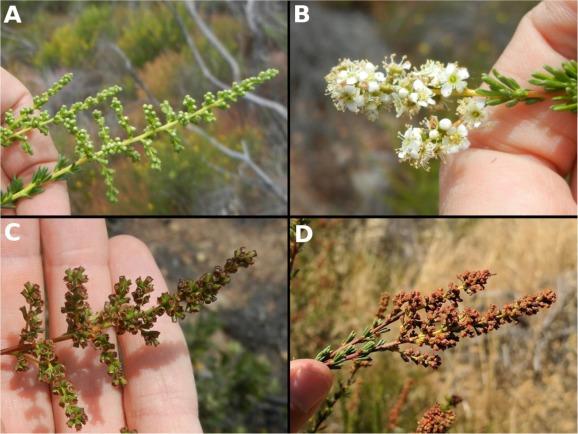
In a nutshell
In fire-prone regions like California, managers rely on measures of fire risk to know when to take actions to prevent or control wildfires as well as notify the public of fire danger. Live fuel moisture, a ratio of water relative to dry weight in living plants, is one such measure. When live fuel moisture drops below a critical threshold of 79%, the area burned in a fire increases dramatically, making this a critically important variable to measure over the course of a fire season.
Chamise (Adenostoma fasciculatum) is the most common and widely distributed plant in chapparal ecosystems in California. Using observations of flowering phenology contributed to Nature’s Notebook, a research team representing multiple institutions determined that the critical live fuel moisture threshold of 79% is crossed after the plant has flowered and before fruits have developed.
What is special about this study?
Prior to this study, live fuel moisture was measured either by clipping plants or estimated from imagery captured by satellites. Both of these methods have disadvantages; clippings require taking samples and transporting them to facilities to weigh and dry, while remotely sensed data is often not available in real time and includes a high amount of variability. In contrast, in-person observations of chamise flower phenology can be done quickly and inexpensively by individuals with a small amount of training.
What does this mean for YOU?
Monitoring the phenology of chamise is a quick and easy way to determine fire danger in a region. This study shows the potential for phenology information from programs like Nature’s Notebook to inform critical management decisions.
Citation: Nathan, E., K. Roth, and A. L. Pivovaroff. 2020. Flowering phenology indicates plant flammability in a dominant shrub species. Ecological Indicators. doi: 10.1016/j.ecolind.2019.105745.